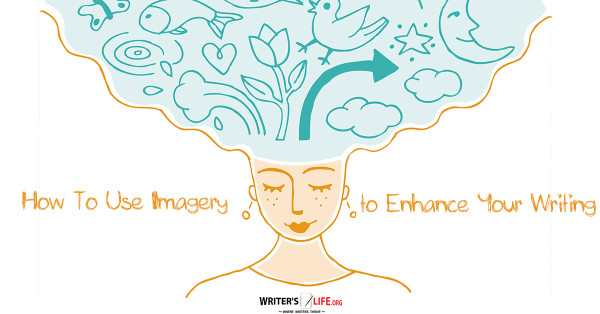- How To Tackle Jealousy In Creative Writing
- Common Submission Mistakes
- How To Stop Your Blog Becoming Boring
- The One Thing Every Successful Writer Has In Common
- How To Make Yourself Aware Of Publishing Scams
- Why Almost ALL Writers Make These Grammar Mistakes At Some Point
- 5 Tips For Authors On How To Deal With Rejection
- Top Mistakes to Avoid When Writing a Novel
- How to Avoid Common New Writer Mistakes
- 10 Mistakes New Fiction Writers Make
How To Use Imagery To Enhance Your Writing

Using imagery effectively is something many writers struggle with. Creating clear, beautiful images can really enhance a piece of writing and create a visual picture for your reader, helping them immerse themselves in your story.
Being able to effectively write an image is a skill and takes time and practice to get right. You don’t want to be overly descriptive as you can run the risk of boring your readers, or simply losing focus of the plot. No one wants a scene explained to them in exact detail, or a list of absolutely everything a character can see.
However, a lack of imagery or visual description leaves readers feeling cold, they have nothing to help them place the character, to understand what they are seeing or get a glimpse into the world that they inhabit.
Here are some tips on how to effectively use imagery to enhance your writing and drive your story forward.
Be specific, but detailed
When you write a story you are creating another world. This world is unique to your characters and everything from the streets that they walk down to the houses that they live in needs to be described in a way that allows your readers to picture the scene for themselves.
They want to be right there with your characters, to recognise things that are familiar alongside them, and be surprised by those that aren’t. Getting the balance right is tricky.
Your character walks into a room - what do they see? What do they smell? What do they hear? Don’t simply list everything that is in that room. But use imagery to let the reader in, and to give them more of an insight into the way that character lives.
A bed perfectly made and tightly tucked in at the edges says something about your character, they are ordered, anxious, they like everything 'just so.' A bed that is unmade, piled with clothes, with an overflowing ashtray next to it paints quite a different picture of the type of person that resides in the room, the state of mind that they are in, and the way that they live their life.
Be unique
Writing gives you freedom to be imaginative, that is one of the most wonderful things about it!
With this in mind don’t be afraid to get a little weird with your imagery. The same tired old scenes have been described to us in a million books, so make yours stand out.
Describe colours and objects in a strange way. A 'damp, thin, meat-red rug' is a far more powerful an image than a 'burgundy rug that had seen better days'. 'Bright gooseberry eyes that buldge from their sockets' are more interesting then 'pretty green' ones with 'long eye-lashes'. Think about each and every image you describe carefully. Play around with the words until you find something that stirs you, be it in a positive or negative way.
Use the senses
The easiest way to conjure a powerful image is to appeal to the senses. Don’t just stop at what a character sees but make sure you include how it smells, how it tastes, what it sounds like. You don’t need to describe every image with all five senses - this will come across as laboured and strange, but picking one or two for each can develop the image further, and make it seem more real.
Keeping your imagery fresh and exciting is one of the biggest challenges you can face as a writer, but by taking time to focus on it, and by continually practicing, you will make a huge difference to your writing, and, consequently, your readers enjoyment of it too.






























